Ivy is a great plant to grow not only for aesthetic reasons but for practical ones as well. It is a very resilient and adaptable plant. You can grow it on your house’s walls, on fences, or even on the balcony. You can even grow it on ground level if you want a nice green carpet on shady areas where you can’t manage to grow anything else.
If you’re not familiar with ivy you’ll be happy to learn that there is a wide variety of ivy plants to choose from, each one with its advantages.
If you are still not convinced that ivy would be a nice addition to your garden, we have put together a list of advantages that will surely convince you. We also have some tips if this is your first time growing ivy and last but not least, we’ve made a list of the best ivy plants to grow at home.
Best Ivy Plants to Grow
1. Fatshedera Lizei
Also known as tree ivy, this plant is a cross between Hedera Helix and Fatsia Japonica. It features five-lobe leaves just like the English Ivy. Nonetheless, the leaves are glossier than those of a typical ivy plant and they feature yellow tips. Moreover, the plant looks more like a shrub than a climber.
It has trailing stems, but they are woodier and it can be made to look like a shrub through pruning. A mature ivy tree grown in a container can reach a top height of 1,5 meters. It blooms in fall but its yellow-greenish flowers are rather insignificant.

Fatshedera Lizei prefers acidic or neutral soils. Outdoors, this type of ivy can grow in USDA zones 7-10. Keep in mind that plants need to be spaced about 1-1,5 meters apart. If you want this plant to climb, it will need to be staked because it doesn’t have the gripping properties of a true ivy plant. It needs to be watered regularly and it will thrive in dappled light. Regular pruning is also necessary to maintain its shrub shape.
2. Parthenocissus tricuspidata
More commonly known as Boston Ivy, this plant is one of the best climbing vines. It can cling to almost anything. Like most ivy plants, it prefers shade or partial shade, but it can also grow in sunnier conditions.
This is the type of ivy that you will generally see on campuses of prestigious universities, hence the ivy-league name. Due to the fact that it can grow on almost anything, this plant can also do some damage to its surroundings. It can damage wood, gutters, and even roofing if it is not kept under control. A mature plant can reach a top size of 15 meters.
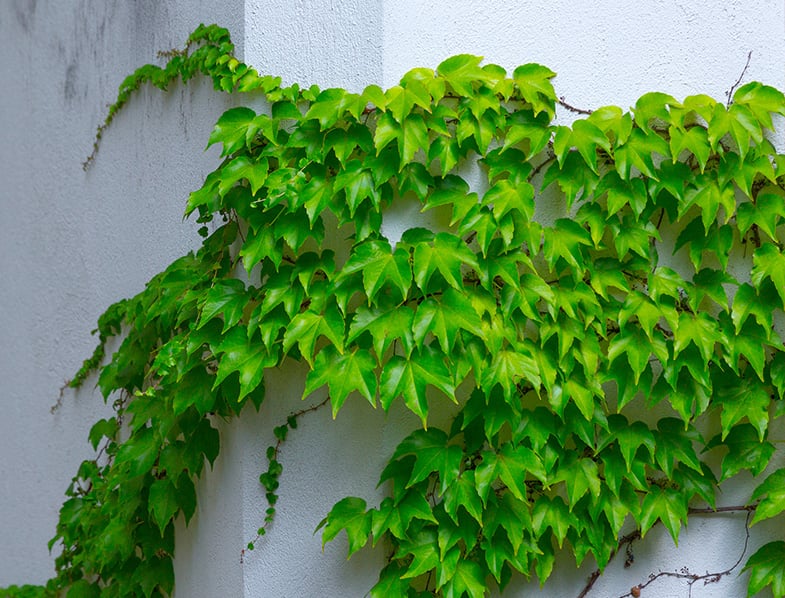
Boston Ivy prefers loamy soil with an average moisture concentration. It thrives in USDA zones 4 to 8. Regular pruning is a must, no matter where you live. In certain parts of North America, it can be quite invasive, so you will need to be extra careful with it.
If you don’t want it to climb, plant it at least 5 meters away from vertical surfaces. If you want it to climb, you can allow it to grow on sturdy trees, on fences, or on pergolas. Growing it on walls can be great for energy efficiency, but you have to view it as a permanent fixture. Removing ivy from walls is almost impossible without damaging the walls.
To learn more about this plant, check out our complete guide to growing and caring for Boston Ivy.
3. Hedera Algeriensis
Algerian Ivy is one of the ivy plants with the most spectacular foliages. The glossy variegated leaves feature shades of different shades of green, from pale to dark, creamy shades of white and silvery grey.
The variegation has a marble-like appearance and the colours remain vibrant all year long. This ivy plant comes in two varieties: the canary cream, and the Variegata type. The Canary cream features whiter leaves, while the Variegata type has darker and more contrasting leaf shades.

Algerian Ivy is a shade-loving plant. It needs to be watered regularly and pruned several times per year. You can prune it heavily in late winter and sporadically whenever its growth gets out of control. This plant is susceptible to pests and diseases, so you will need to check it regularly. The good part is that these problems can easily be neem oil or insecticidal soap.
4. Cissus Alata
This ivy genus grows all over the world in tropical and subtropical climates. The most popular plant in the Cissus genus is the Grape Ivy. Despite its name, this ivy plant doesn’t produce any grapes. However, its leaves are very similar to the leaves of grapevines. This vine can grow up to 3 meters tall and almost 2 meters wide.
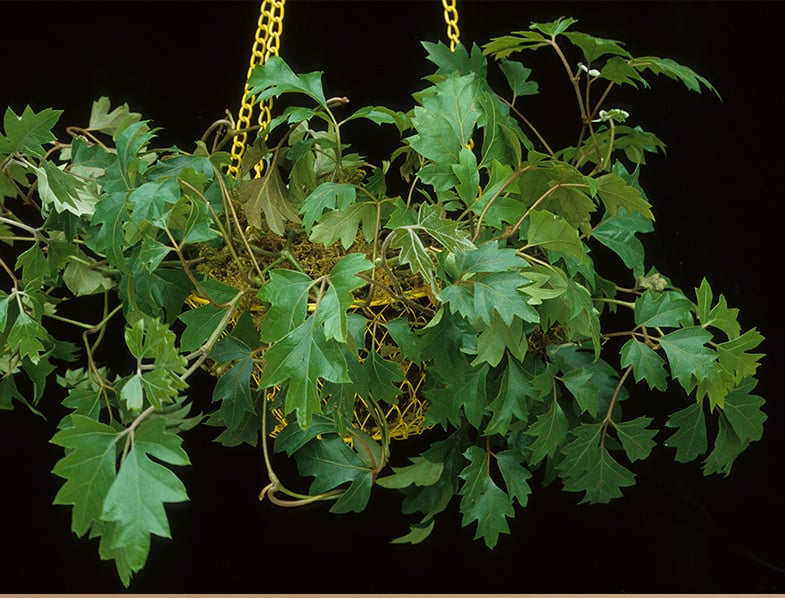
Cissus Alata prefers partial shade and peaty, well-drained soil. It produces green flowers throughout the whole year, but its flowers are quite insignificant.
Unlike most ivy plants, the Grape Ivy is not toxic for humans or pets. It can be grown both indoors and outdoors and it is very easy to care for. It prefers partial shade and it likes to have its soil moist during the growing season. You can reduce the water in winter.
You can learn more about it from our Grape Ivy Guide.
5. Plectranthus Australis
If you are looking for an ivy plant that can thrive in bright, indirect sun, you can’t go wrong with the Swedish Ivy. This plant is not related to the Hedera genus, but it is a very interesting fast-growing vine. It comes in a classic green or a variegated type.
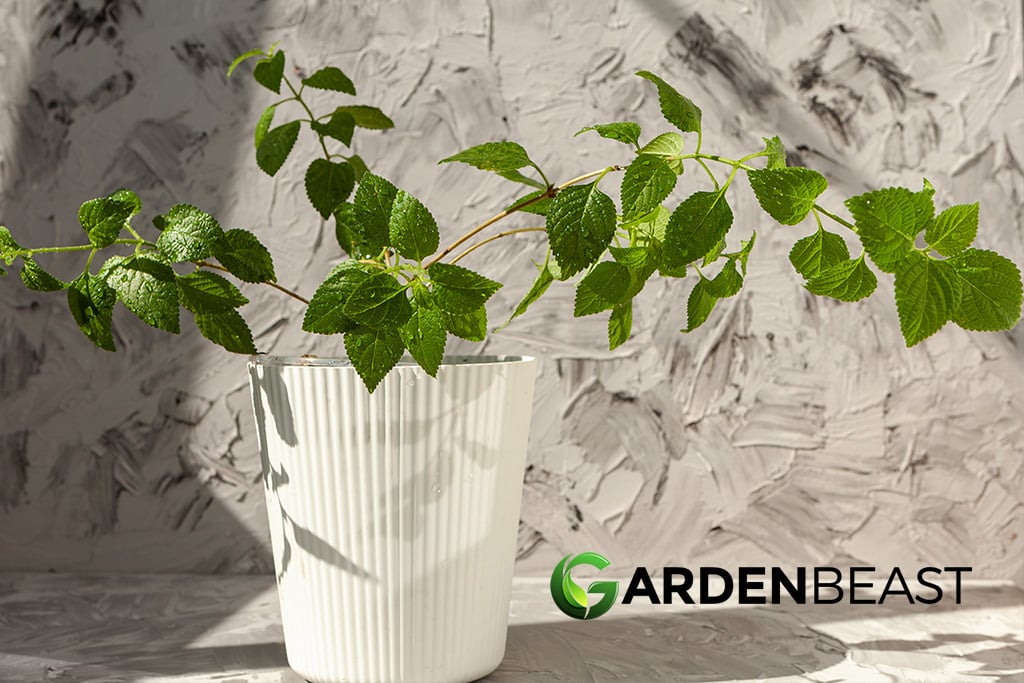
The plant likes to have its soil kept moist when it is young, but as it matures it likes it better if you allow the soil to dry out between watering sessions.
Like with most fast-growing plants, fertilization is not necessary, especially if you grow it in a container. You don’t want it to outgrow its container too quickly. When pruning the plant, you can use the tip cuttings to make new plants. It’s very easy to propagate.
Learn more about this plant from our Swedish Ivy Guide.
6. Needlepoint Ivy
This plant gets its name from its lobed leaves that have been bred to grow in thin points. The unique leaves give it a more airy look which adds texture and variety when displayed alongside classic vine plants.
It is a very hardy plant that can be grown both outdoors and indoors. It is smaller than other ivy plants, reaching a top height of 90 cm.
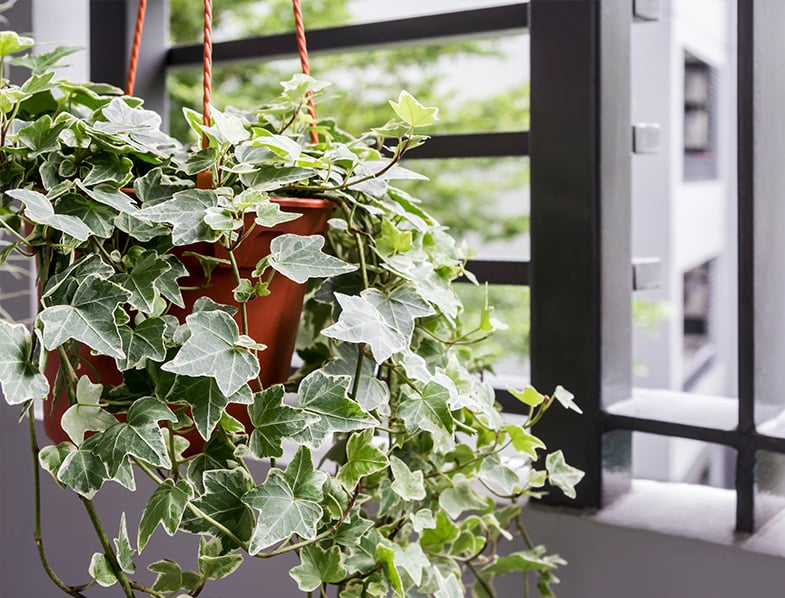
Needlepoint ivy prefers partial or full shade. It thrives in fertile, well-drained soil, but it can adapt to a wide range of growing conditions. Like most ivy plants, it is susceptible to pests and diseases, so it needs to be checked regularly. It looks particularly well in hanging baskets.
Learn more about this plant from our English Ivy Guide
7. Hedera Hibernica
The Irish Ivy is one of the most adaptable ivy plants. It can grow just as well in direct sun as it does in full shade. It looks very similar to the classic English Ivy, but it has larger leaves. Its vines are also light green as opposed to the white vines of the English variety.
One surprising fact is that this variety is more aggressive than the English Ivy. Before planting it outdoors, you should check to see that you don’t live in an area where this plant is listed as aggressive. It can reach a top height of 12 meters and a top spread of 8 meters. Nonetheless, it will take between 5 and 10 years for it to reach its top size.

This evergreen plant prefers alkaline soil, rich in humus. It needs to be watered frequently during the first year. Once it matures it will find natural sources of water. It can be pruned during any season. It doesn’t need much maintenance, other than the regular check for pests and diseases which can be treated with classic insecticidal soap.
Advantages of Growing Ivy

It will grow anywhere
Are you struggling to fill that north garden corner where nothing ever grows? Well, you will be surprised to learn that a shade-loving ivy plant will happily grow there. In fact, it will grow effortlessly on any north-facing wall or fence. It is a great way to mask an ugly wall or to turn your fence into a green background for your outdoor relaxation space.
It attracts wildlife all year round
As an evergreen plant, ivy attracts a wide variety of insects and tiny creatures. It is a great way to build an ecosystem in your garden. It can be a great foundation for creatures looking to nest or hibernate. Due to its evergreen nature, it will keep your home looking fresh all year round. Outdoor ivy also produces flowers that are rich in nectar and attract pollinators and other beneficial insects.
Natural home insulation and moisture control
Contrary to popular belief, ivy does not damage your walls. On the contrary, English Ivy does a great job of keeping moisture away from your walls. In extreme temperatures, it also acts as natural insulation.
Ivy can also be grown indoors in pots and containers. As an indoor plant, ivy can be great in reducing and preventing mould. There are also other types of mould that can increase indoor humidity. Such is the case of the Hedera Helix, which has one of the highest transpiration rates. It is important to know the properties of your ivy before bringing it home.

It complements existing garden features
Ivy grows extremely well on trees. Contrary to popular belief, it doesn’t harm the trees. As a shade-loving plant, it stays mostly on the ground and on the lower part of the trunks. It doesn’t go near the canopy, so it doesn’t affect the trees’ ability to create photosynthesis.
Air purification
Most types of ivy plants are also great air purifiers. It can remove a wide range of common indoor chemicals like benzene, trichloroethylene, or octane. Ivy plants can be great indoor companions for people who suffer from asthma or other respiratory disorders.
Medicinal properties
English Ivy, the most common type of ivy has been used for a long time as a natural remedy for burns, swelling, infection, and joint pain. It is believed that consuming ivy extracts is also beneficial for respiratory problems. The Hedera Helix Ivy is also very useful in treating inflammation, arthritis. And respiratory problems.
Tips for Growing Ivy Plants
Hedera Helix is an evergreen perennial. Its woody vines can crawl on the ground or they can climb almost any vertical object. While it has the same basic needs, ivy grows differently indoors than it does outdoors.
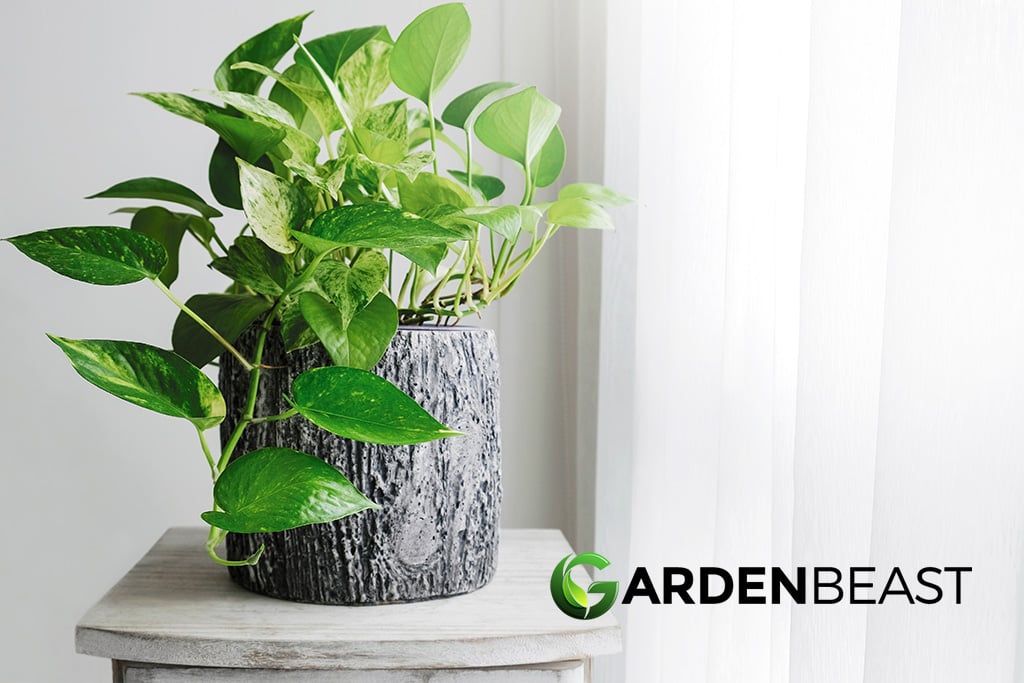
Outdoors
While it can survive in almost any soil with decent draining properties, it performs better in alkaline soil (6.0-7.8 pH). Enrich the soil with organic matter to give it a nice growing boost. Add some peat moss and bark to improves drainage. Ideally, you should plant it in full or partial shade. It can survive in full sun too, provided that it doesn’t get too much scorching afternoon sun.
A great thing about ivy is that if it gets scorched, it bounces back very fast. It needs regular watering until it matures, after which it can get water from natural sources. As far as maintenance goes, it needs to be trimmed a few times per year. One thing to keep in mind is that it can be invasive at times, hindering native plants. However, this only happens in certain areas. As such, make sure to check if you live in an area where ivy plants get invasive before planting one in your garden.
Indoors
Ivy plants are a lot easier to manage when grown in containers. They grow a lot slower indoors than they do outdoors, but they can reach about 2,5 meters per year. When the plant is young, you need to water it regularly. Once it matures, it is best to allow the soil to dry completely before watering it again.
Keep in mind that ivy is a toxic plant. All plant parts are toxic to both humans and pets. As such, it is best to keep it out of the reach of children and pets.
Conclusion
Ivy plants add a tropical vibe to any interior. They also look amazing outdoors, especially if they are allowed to grow to full size. There are a wide variety of ivy plants to choose from. If you want to grow them indoors, you can grow several varieties to create a versatile display of hanging plants. For outdoor growers, make sure to choose a variety that is not listed as aggressive for the area where you live.
What are your favourite ivy plants? Share your answer in the comments below!
